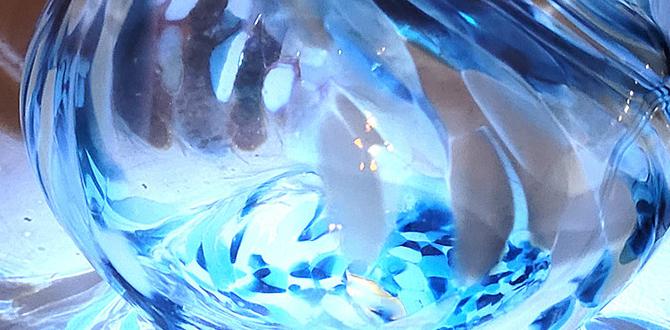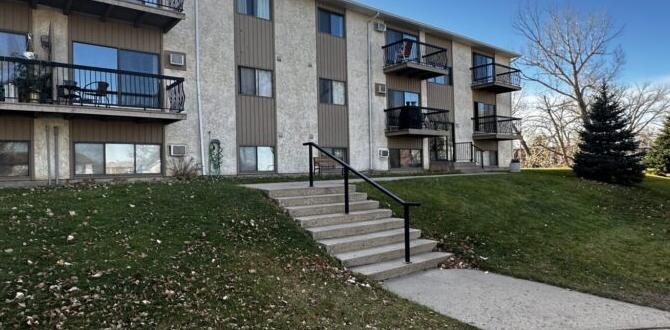Bolded Quick Summary
Caring for basil plants indoors is simple with the right approach! Provide plenty of sunlight (at least 6-8 hours daily), water consistently when the top inch of soil is dry, use well-draining soil, and pinch regularly to encourage bushier growth. This guide offers proven expert tips for thriving indoor basil.
Dreaming of fresh basil from your kitchen counter, even when it’s chilly outside? Many home cooks say growing basil indoors can be tricky, leading to leggy plants and disappointing harvests. But don’t worry! With a few simple secrets, you can enjoy fragrant, delicious basil all year round. We’ll walk you through everything you need to know, step-by-step, to keep your basil happy and healthy indoors. Get ready for pesto, caprese salads, and more, right from your own home!
Why Grow Basil Indoors?
Bringing basil inside isn’t just about convenience; it’s about bringing a piece of your garden connection into your home. Imagine snipping fresh leaves for your pasta sauce or a vibrant garnish for a refreshing drink, no matter the weather. Indoor basil offers a continuous supply of this popular herb, enhancing your cooking and bringing a lovely aroma to your living space. Plus, it’s a fantastic way for apartment dwellers or those with limited outdoor space to experience the joy of growing their own food. It’s a simple, rewarding way to add a touch of green and flavor to your everyday life.
Getting Started: Planting Your Indoor Basil
Embarking on your indoor basil journey begins with the right setup. You have a couple of options: starting from seeds or purchasing a young plant from a nursery. Both methods are beginner-friendly and can lead to a flourishing herb garden.
Option 1: Starting Basil from Seeds
Starting basil from seeds is an incredibly rewarding experience. You get to witness the entire life cycle of your plant, and it’s often the most cost-effective way to begin.
What You’ll Need:
- Basil seeds (Genovese, Sweet Basil, or Thai Basil are great beginner choices)
- Seed starting trays or small pots with drainage holes
- High-quality seed starting mix or a light potting mix
- A spray bottle for watering
- A warm, sunny location or grow lights
Step-by-Step Seed Starting:
- Fill your containers with the seed starting mix, leaving about half an inch of space at the top.
- Moisten the soil gently with the spray bottle until it’s evenly damp, but not waterlogged.
- Sow 2-3 basil seeds per cell or small pot, about ¼ inch deep. Basil seeds are tiny, so be gentle!
- Lightly cover the seeds with the soil mix.
- Keep the soil consistently moist using the spray bottle. Basil seeds need moisture to germinate.
- To retain humidity, you can cover the containers with a clear plastic dome or plastic wrap.
- Place the containers in a warm spot, ideally between 70-80°F (21-27°C). A sunny windowsill can work, but a heat mat specifically for seedlings can speed up germination.
- Once you see sprouts, remove the cover and ensure they receive plenty of light.
- When the seedlings have their second set of true leaves and are a few inches tall, thin them by snipping the weakest seedlings at the soil line, leaving the strongest one or two per cell/pot. This prevents overcrowding.
Option 2: Buying a Young Basil Plant
If you’re eager for quicker results or want a head start, purchasing a young basil plant from a garden center or nursery is a fantastic alternative. Look for plants that are sturdy, not leggy, have vibrant green leaves, and appear pest-free.
What You’ll Need:
- A healthy young basil plant
- A pot with drainage holes (at least 6 inches in diameter)
- Good quality potting mix
Transplanting Your New Basil Plant:
- Choose a pot that is at least 6 inches in diameter and has drainage holes. This gives the roots room to grow.
- Fill the pot with a fresh, good-quality potting mix. Avoid heavy garden soil, which can compact too much in containers.
- Gently remove the basil plant from its nursery container. If the roots are tightly bound (root-bound), very gently tease them apart a little at the bottom.
- Place the plant in the new pot, ensuring the top of the soil ball is about an inch below the rim of the pot.
- Fill in around the plant with potting mix, firming it gently.
- Water thoroughly until water drains from the bottom. This helps settle the soil and reduces transplant shock.
Essential Indoor Basil Care: The Core Principles
Once your basil is planted, consistent care is key to keeping it thriving. Think of it as providing the perfect environment for your plant to flourish. These are the foundational elements for healthy basil.
1. Light: The Sun-Loving Herb
Basil absolutely adores sunlight. Indoors, this means strategic placement is crucial. Your basil plant needs ample light to grow strong, leafy stems and develop its characteristic flavor. Insufficient light is one of the most common reasons for leggy, weak basil.
- Ideal Location: Place your basil plant in the sunniest window you have. A south-facing window is usually best.
- Hours of Light: Aim for at least 6-8 hours of direct sunlight per day. Some varieties might tolerate slightly less, but more is generally better.
- Supplementing Light: If you don’t have a window that provides enough natural light, consider using grow lights. Full-spectrum LED grow lights are energy-efficient and effective. You can get simple desk lamp style lights or larger setups. Position the light about 6-12 inches above the plant, and run it for 12-16 hours a day. The U.S. Department of Agriculture (USDA) Agricultural Research Service provides excellent information on the benefits of light for plant growth.
- Rotating the Plant: Turn your basil plant a quarter turn every few days. This ensures all sides of the plant get an equal amount of light, promoting even growth and preventing leaning.
2. Watering: Finding the Right Balance
Watering is often where beginners get a little worried. Too much water can lead to root rot, while too little can cause wilting and stress. The key is consistent moisture, not soggy saturation.
How to Tell When to Water:
- The Finger Test: Stick your finger about an inch into the soil. If it feels dry at that depth, it’s time to water. If it feels moist, wait a bit longer.
- Observe Your Plant: Wilting leaves are a clear sign your basil is thirsty. However, don’t let it get to this point regularly, as it stresses the plant.
- Pot Weight: A dry pot will feel much lighter than a recently watered one.
Watering Best Practices:
- Water Thoroughly: When you water, do so until water runs freely from the drainage holes at the bottom of the pot. This ensures the entire root ball gets hydrated and helps flush out excess salts from the soil.
- Water the Soil, Not the Leaves: Try to water directly at the base of the plant. Wet leaves can be more susceptible to fungal diseases, especially in humid indoor environments.
- Empty Saucers: Never let your basil plant sit in a saucer full of water. This is a quick way to invite root rot. Empty any excess water from the drainage saucer about 15-20 minutes after watering.
- Consistency is Key: Avoid drastic cycles of drying out completely and then flooding. Aim for the soil to dry out slightly between waterings. Indoor environments can vary, so check your plant daily, even if you only need to water every few days.
3. Soil and Potting: A Foundation for Growth
The type of soil and the pot you use plays a vital role in basil’s health. Good soil provides aeration, drainage, and nutrients, while a well-chosen pot ensures roots have space and excess water can escape.
Choosing the Right Soil:
- Potting Mix is Best: For container gardening, always use a high-quality potting mix. These are formulated to be light, airy, and well-draining, which is exactly what basil needs. They typically contain ingredients like peat moss, coir, perlite, and vermiculite.
- Avoid Garden Soil: Garden soil is too dense for pots. It compacts easily, hindering drainage and air circulation to the roots, which can lead to problems.
- Adding Amendments: For even better drainage, you can mix in a bit of perlite (about 1 part perlite to 3 parts potting mix) if you’re concerned about overwatering.
Pot Selection:
- Drainage Holes are Non-Negotiable: This is the most critical factor for any pot you choose. Without them, water can’t escape, leading to root rot.
- Size Matters: Start with a pot that is at least 6 inches in diameter for a single plant. As your basil grows, you might need to repot it into a slightly larger container (e.g., 8-10 inches) to give its roots more space. Overcrowded roots lead to a stressed plant.
- Material: Terracotta pots breathe and dry out faster, which can be good for preventing overwatering. Plastic pots retain moisture longer. Choose based on your watering habits and environment.
4. Temperature and Humidity: Creating a Comfortable Climate
Basil thrives in warm, humid conditions, much like its native Mediterranean climate. Replicating this indoors is usually straightforward, especially during warmer months.
Ideal Temperature:
- Basil prefers temperatures between 65-85°F (18-29°C).
- It can tolerate slightly cooler temperatures but should be protected from frost. Avoid placing it near drafty windows or doorways that experience significant temperature fluctuations.
- Dropping below 50°F (10°C) can damage the plant
Humidity Levels:
- Basil enjoys moderate to high humidity. Most homes have lower humidity, especially in winter when heating systems are running.
- How to Increase Humidity:
- Pebble Tray: Place the pot on a tray filled with pebbles and water. As the water evaporates, it increases humidity around the plant. Ensure the pot’s drainage holes are above the water line, not sitting in it.
- Misting: Lightly misting the leaves occasionally can help, but do this in the morning so the leaves can dry relatively quickly. Avoid misting in the evening, as damp leaves can encourage fungal growth.
- Grouping Plants: Clustering your basil plant with other houseplants can create a microclimate with slightly higher humidity.
- Humidifier: For very dry environments, a small room humidifier can make a significant difference not just for your basil but for other houseplants too.
Maximizing Your Harvest: Pruning and Pinching
This is perhaps the most crucial step for abundant, bushy basil that produces a lot of usable leaves. Pruning and pinching aren’t just about harvesting; they’re about shaping the plant for better growth and production.
Why Pinch and Prune?
- Encourages Bushier Growth: When you pinch off the top set of leaves, the plant is stimulated to grow two new stems from the leaf nodes just below where you cut. This turns a single stem into two, then four, and so on, creating a fuller, lusher plant.
- Prevents Flowering: Allowing basil to flower can change the flavor of the leaves, making them more bitter. It also signals to the plant that its reproductive cycle is complete, and it may start to decline. Pinching prevents it from flowering, keeping the leaves tender and flavorful and encouraging vegetative growth.
- Provides Fresh Leaves for Cooking: Regular harvesting is, of course, the primary goal!
When and How to Pinch/Prune
You can begin pinching your basil once the plant has at least 3-4 sets of true leaves and is about 6 inches tall.
Pinching Technique:
- Look for a Set of Leaves: Find a point on the stem just above a pair of leaves.
- Snip or Pinch: Using clean scissors or your fingernails, make a clean cut or pinch off the stem right above that set of leaves. You are essentially removing the top part of the stem.
- Harvesting for Use: The pinched-off stem, with its leaves, is your harvest! You can place these stems in a glass of water to keep them fresh for a few days, or use them immediately in your cooking.
- Where to Cut: Always cut above a leaf node (where leaves attach to the stem). This is where new growth will emerge.
Regular Harvesting:
Treat your basil plant as an ongoing supply. As you need leaves, harvest them regularly. Don’t just pull off individual leaves from the middle of the plant; this can damage the stem. Instead, use the pinching method described above to harvest whole stems.
What to Do if Your Basil Flowers:
If you notice small flower buds forming at the top of the stems, pinch them off immediately. You can save the tiny flowers to eat (they have a mild basil flavor) or compost them. Removing them redirects the plant’s energy back into leaf production.
Feeding Your Basil: Fertilizing for Flavor
Basil grown in containers will eventually use up the nutrients in the potting mix. Providing a balanced fertilizer can boost growth and ensure healthy, flavorful leaves. However, basil is not a heavy feeder, so moderation is key.
When to Fertilize:
- Start fertilizing about 4-6 weeks after planting or when you first transplant a store-bought plant.
- You can fertilize every 4-6 weeks throughout the growing season.
- If your plant looks pale or growth slows significantly, it might need a feeding.
What Fertilizer to Use:
- Balanced Liquid Fertilizer: A good choice is a balanced liquid fertilizer with an N-P-K ratio like 10-10-10 or 5-5-5.
- Organic Options: Look for organic liquid fertilizers like fish emulsion or liquid seaweed. While they can be a bit smelly initially, they provide excellent nutrients and are gentle on plants.
- Slow-Release Fertilizer: You can also use a slow-release granular fertilizer mixed into the soil at planting time, or sprinkled on top according to package directions. This provides nutrients over a longer period.
How to Fertilize:
- Dilution is Key: For liquid fertilizers, always dilute according to the package instructions. It’s often recommended to use half the strength that the instructions suggest for houseplants, especially with basil, to avoid nutrient burn. “When in doubt, err on the side of too weak rather than too strong,” is a good mantra.
- Water First: Water your basil plant until it’s slightly moist before applying liquid fertilizer. Applying fertilizer to dry soil can damage the roots.
- Apply to Soil: Water the soil directly with the diluted fertilizer solution.
Never over-fertilize. Too much can lead to excessively fast growth that is weak and less flavorful, or even burn the plant’s roots.
Common Pests and Problems (and How to Solve Them!)
Even indoors, basil can sometimes encounter pests or develop issues. The good news is that most problems are easily preventable or treatable.
Common Pests:
- Aphids: These tiny green, black, or brown insects cluster on new growth and the undersides of leaves, sucking sap.
- Spider Mites: You might notice fine webbing on the leaves and undersides, and tiny moving dots. They thrive in dry conditions.
- Fungus Gnats: Small, dark flies that hover around the soil surface. They are attracted to constantly moist soil and their larvae can damage roots.
Solutions for Pests:
- Inspect Regularly: Make it a habit to look closely at your basil leaves (top and bottom) and stems each time you water. Early detection is key.
- Wipe Them Off: For small infestations, a good first step is to simply wipe the pests off with a damp cloth or cotton swab.
- Water Rinse: A strong spray of water from your sink or a showerhead can dislodge many pests like aphids.
- Insecticidal Soap or Neem Oil: For more persistent pests, use an organic insecticidal soap or neem oil spray. Follow product instructions carefully and spray in the evening to avoid plant leaf burn from sunlight. Always test on a small area of the plant first.
- Improve Air Circulation: This helps prevent fungal issues and can deter some pests.
- Control Watering: Fungus gnats are usually a sign of overwatering. Let the top inch or two of soil dry out completely between water







